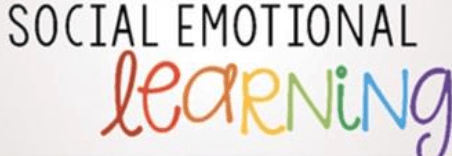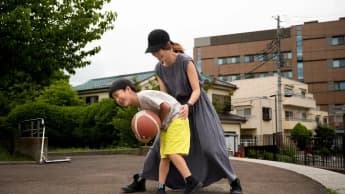Dive into the significance of self-awareness in the classroom, exploring techniques and benefits for both students and teachers in fostering emotional intelligence and personal growth.
Self-awareness within the classroom is a crucial element of social emotional learning. You may have heard a lot about social emotional learning, or perhaps you are implementing it in your classroom. There is an abundance of valuable information available regarding SEL! It's beneficial to learn about the overarching concepts of this framework as it is filled with practical insights.
In the upcoming posts, I will dissect social-emotional learning (SEL) into smaller, more manageable segments to explore the valuable insights it provides. This five-part series will thoroughly examine each of the five CASEL competencies, which include self-awareness, self-management, social awareness, relationship skills, and responsible decision-making.
The first topic in the series is Self-Awareness. Let’s explore this fundamental competency and understand its significance! CASEL, which stands for the Collaborative for Academic, Social, and Emotional Learning, serves as a crucial foundation for social-emotional learning. They developed the SEL framework, which comprises 5 essential competencies, beginning with self-awareness.
What is Self-Awareness?
What exactly is self-awareness? CASEL defines it as "The ability to comprehend one's own emotions, thoughts, and values and how these aspects influence behavior in various situations." (1)
In other words, this competency focuses on the process of understanding ourselves, encompassing aspects such as our identity, preferences and aversions, strengths and weaknesses, emotions and viewpoints, as well as the ways in which our thoughts affect our feelings, words, and actions.
Why is it essential to help students become aware of these aspects of themselves? There are several reasons that we will explore in this post.
What Makes Self-Awareness Significant?
Social-emotional learning focuses on developing skills that enable students to regulate their emotions and behaviors while also fostering connections with others. To accomplish this effectively, it's essential to understand your inner self and what motivates you.
Consider this! Can you set goals for yourself if you don't recognize your dreams? How can you figure out how to soothe yourself if you aren't aware of what triggers your frustration? Can you effectively communicate something you'd like to do with a friend if you're unaware of your own preferences?
Many students struggle to express these concepts independently without guidance. Social Emotional Learning (SEL) equips children with the abilities to comprehend the functioning of their minds and the reasons behind their actions. When students gain self-awareness, they can do things such as:
And much more. These are lifelong skills that children will carry into adulthood. Assisting students in becoming attuned to themselves prepares them for success both in school and beyond.
Advantages in the Classroom
If social-emotional learning (SEL) and self-awareness contribute to students' success in school, it follows that classrooms can gain from this as well. Understanding oneself is not only relevant to individuals; others can also benefit from the self-awareness of their peers. This is advantageous for the classroom environment!
Studies have shown that students who participated in a social emotional learning (SEL) program in school exhibited enhanced behavior in the classroom, a greater capacity to cope with stress and depression, and more positive attitudes towards themselves, their peers, and their school environment.
This is completely understandable. As children develop their self-awareness and learn to manage their emotions, they gain greater confidence in their skills. Students become more adept at using communication tools, leading to improved behaviors, attitudes, and relationships among peers!
Picture a group of children gathered in a room who are unable to express their emotions. They might not consider the impact of their actions and may act on impulse instead. Some of these children may argue to get their way, say unkind things, or disrupt others.
With the introduction of SEL and self-awareness lessons, students begin to undergo a transformation. They start discovering new methods to express their needs. They become capable of recognizing when they are feeling out of control and learn how to address it. They develop skills such as sharing or waiting for their turn, as they understand the impact of their actions on others.
When students become self-aware, they also connect better with their classmates, resulting in a more supportive and cohesive classroom environment.
Understanding Self-Awareness for Educators
Self-awareness is not limited to students; it is also a valuable area for growth for teachers! Educators can utilize their own self-awareness to support their self-care and enhance their skills in teaching social-emotional learning (SEL) and engaging with their students.
How Can Educators Cultivate Self-Awareness?
Educators who cultivate their own self-awareness can significantly enhance their teaching and classroom environment. What does self-awareness for teachers entail? Becoming attuned to oneself can assist in uncovering or identifying the following aspects:
And there's so much more to it. Ultimately, when you take the time to connect with what motivates and inspires you, you can progress and develop as both an educator and a person. Both you and your students can gain significant advantages from your self-awareness!
Explore this article to discover more about the benefits of social-emotional learning for teachers!
Instructing on Self-Awareness
So, how can you instruct your class on self-awareness? Continue reading! The remainder of this post will provide strategies and lesson suggestions.
The initial step in teaching self-awareness is to ensure that students understand its meaning and recognize how it can contribute to their success in the classroom. This can be achieved by incorporating the term "self-awareness" into the classroom's vocabulary and culture. Frequently discuss self-awareness!
Incorporate self-awareness check-ins with your students. These can be simple reflective questions posed to the whole class or during one-on-one conversations. You might ask questions such as: How am I feeling? What thoughts are on my mind? What do I need? This approach allows students the opportunity to pause and contemplate their thoughts and emotions.
To develop self-awareness, students must be instructed on how to reflect on their own emotions, thoughts, and behaviors. Highlighting actions in real-time, such as saying, “I notice your classmate is trying to speak and she was interrupted; how did your actions impact her?” or “I see you’re struggling to remain focused right now. How does your body feel, and what do you need?” These brief conversations about self-awareness can engage students' minds and encourage them to explore their inner experiences.
If you are seeking inspiration for specific activities that can assist you in implementing these self-awareness strategies, take a look at the following ideas.
“I Wonder” to Foster Self-Awareness and Routine Check-Ins:
This is an easy activity that requires minimal effort and can be utilized throughout the day. You can kick off the day with an “I wonder” question during a morning meeting. As the children get settled in their seats, just pose the question, “I wonder how we are feeling this morning. Let’s take a moment to check in with ourselves. I wonder about our energy levels. Or, I wonder how we feel physically. I wonder how our minds are doing, and I wonder how we’re feeling emotionally today.”
Take a moment to pause after each "I wonder" statement. Students can choose to keep their thoughts to themselves or share their feelings by giving a thumbs up or thumbs down.
Following this, you can also incorporate “I wonder” questions after various activities, such as during transitions between lunch and the afternoon, after a test, or upon finishing a challenging task.
Incorporating simple check-ins throughout the day encourages self-awareness by providing students with the opportunity to pause and reflect on their internal experiences.
Ways to Enhance Self-Awareness Through Mindfulness or Guided Imagery Exercises:
Meditation serves as an effective method to take a break and practice basic techniques for self-awareness. Often referred to as mindfulness or guided imagery, this activity enables students to unwind, relax, and contemplate their inner thoughts, fostering a greater awareness of themselves.
Mindfulness can help individuals become aware of how their bodies feel and combine this awareness with breathing techniques to manage their emotional state. For instance, you might say, “How does your body feel? Is your heart beating fast? Are your hands damp? Take a moment to relax by inhaling for 3 seconds and then exhaling for 3 seconds…”
Another form of meditation involves a series of questions that help students assess their feelings while they breathe. This can lead to a discussion about various reflective steps they can take. For instance, it might be phrased as, “Let’s center ourselves in this moment by paying attention to our surroundings… First, concentrate on the sounds you hear… Then, shift your attention to what you can touch… Next, pay attention to the scents in the air…”
Guided imagery creates a scenario where children visualize themselves as an object and emulate the actions of that object to enhance their self-awareness. For instance, it could be phrased like this, "Picture yourself as a beautiful flower in full bloom. You are standing tall, your colors are vibrant, and you are healthy. How might you appear when you're feeling exhausted? Are you like a flower that needs water? Are your petals drooping? Do you feel like wilting?..."
Journaling to Implement Self-Awareness Insights:
Journaling serves as an excellent method for encouraging children to think and engage with self-awareness. Maintaining a journal provides them with a way to express the concepts they have learned in their own terms. Using their own language fosters meaningful connections to self-awareness.
Students may use a standard notebook for journaling, or they could have a journal titled “I feel when” or “my feelings journal” where they can express their emotions, explore the reasons behind those feelings, and identify strategies to manage their emotions effectively.
The class can also engage in unconventional journaling activities. For example, they can listen to various genres of music and reflect on their observations and the feelings or thoughts that arose from it. Journals are not limited to writing alone. Students can also create drawings or posters related to a self-awareness skill they have learned. These visuals can be displayed in the classroom as a reminder for them to utilize that skill in the future.
Think about incorporating mindfulness into your classroom! It complements social-emotional learning (SEL) beautifully and serves as an excellent resource for fostering calm and relaxation during a hectic school day. By employing these best practices, your students will benefit from a meaningful mindfulness experience.
Looking for Resources on Self-Awareness for Your Classroom?
My social-emotional learning curriculum clearly defines self-awareness for students and offers practice opportunities for various aspects of self-awareness.
You can also locate these lessons in my FULL YEAR curriculum, which offers the best value:




